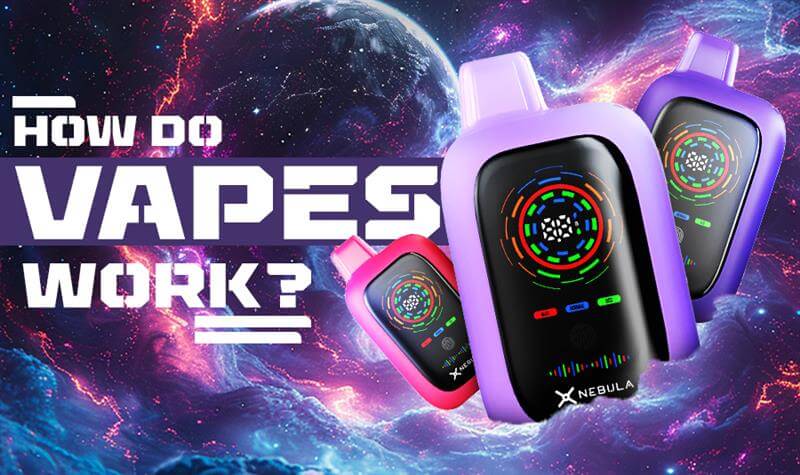How to Dispose of Disposable Vapes?

The idea of disposable vapes being single-use, vape-and-throw devices is often misread—most vapers go ahead and throw them in the trash. But is that the way to go?
Most certainly not. Throwing a disposable vape into the garbage with other household waste can be a fire waiting to ignite, as they contain lithium batteries. Batteries thrown into the wrong location can wreak havoc.
Disposable vaping devices have surged in popularity in the past few years, and more and more devices are going to the dumpster. In fact, many devices have a symbol that indicates they should not be put in the trash as they contain hazardous materials but are often overlooked.
Let’s explore how to properly dispose of disposable vapes to minimize harm to the environment and the risks they pose.
Where to Dispose of Vapes?
Disposable vapes aren’t meant to be opened, so you can’t remove the battery of your 5000 hit vapes and dump it separately. The solution is to recycle the entire device. Check your locality for vape recycling stations or resource management centers that accept vapes. Unfortunately, not many cities have these facilities, and where they do, they may not be easily accessible.
In most cases, disposable vapes need to be treated like other hazardous materials, such as chemicals or paint.
According to the U.S. Environmental Protection Agency (EPA), the best way to ensure vapes don’t cause a fire, expose anyone to toxic chemicals, or release toxins into the environment is to take them to a household hazardous waste collection site. These sites accept batteries and know how to dispose of them properly.
You may also ask your local vape retail stores if they have vape disposal programs. Many vape shops are aware of the environmental concerns and may offer recycling or disposal options for their customers. Alternatively, check with big-box stores for drop boxes for batteries; these are often more convenient than visiting a hazardous waste management facility.
Why Are Disposable Vapes Hazardous?
Disposable vapes become hazardous because of two key components: nicotine and lithium batteries.
Nicotine:
Vapes contain liquid nicotine, which is toxic and can harm both the environment and workers handling trash. Your 50 mg vape is going to be fun for you when vaped, but it poses a threat for those who are exposed to the liquid nicotine directly. Nicotine can be easily absorbed through the skin, leading to nicotine poisoning with symptoms such as:
● Difficulty breathing
● Seizures
● Fainting
Even small amounts of nicotine leaching into soil or water sources can have significant environmental impacts. This makes proper disposal critical.
Lithium Batteries:
Lithium batteries are highly hazardous because they can catch fire if damaged. Trash compactors can easily damage them, resulting in fires in household trash or recycling bins. Fires caused by batteries in the trash are surprisingly common; solid waste facilities report 3-5 such fires every month.
All it takes is for another object to hit the battery in the right spot. Imagine a dump truck catching fire in the middle of the road, posing a threat to the driver, the truck, and the surroundings. Even at landfills and recycling facilities, where paper and cardboard abound, damaged batteries act as a dangerous ignition source.
Steps for Safe Vape Disposal
 To ensure you’re disposing of disposable vapes safely and responsibly, follow these steps:
To ensure you’re disposing of disposable vapes safely and responsibly, follow these steps:
- Check for Recycling or Hazardous Waste Facilities: Search for local facilities that accept hazardous waste or electronic waste. Many municipalities have designated collection points for batteries and small electronics, and disposable vapes often fall into this category.
2. Ask Vape Shops: Reach out to your local vape shop. Many retailers are beginning to offer take-back programs to recycle vapes. If your local shop doesn’t have such a program, ask if they know of nearby facilities or services.
3. Use Battery Disposal Points: If your area has battery disposal boxes at hardware stores, supermarkets, or other public locations, confirm whether they accept devices like vapes. Remember not to discard the device in regular recycling bins, as it requires specialized handling.
4. Follow Manufacturer Guidelines: Some vape brands offer mail-in programs or specific guidelines for recycling their products. Check the manufacturer’s website for instructions.
5. Handle with Care: If you’re storing disposable vapes before disposal, keep them in a cool, dry place away from flammable materials. Damaged or leaking vapes should be handled with extreme caution and taken to a hazardous waste site as soon as possible.
The Importance of Responsible Disposal
With billions of disposable vapes sold annually, improper disposal could lead to severe environmental consequences. Consider the following:
● Environmental Impact: The chemicals in vape juice and batteries can pollute soil and water, affecting wildlife and ecosystems.
● Human Safety: Fires caused by improperly discarded batteries can endanger workers and residents.
● Regulatory Compliance: Many regions have strict regulations for disposing of hazardous waste, including electronic devices and nicotine-containing products. Proper disposal ensures compliance with these laws.
By taking a few extra steps to dispose of disposable vapes responsibly, you contribute to a safer and cleaner environment while reducing the risks posed by hazardous waste.
While disposable vapes are convenient, their growing popularity brings an urgent need for responsible disposal practices. Understanding the hazards of nicotine and lithium batteries and taking advantage of recycling programs or hazardous waste facilities are crucial steps to mitigate the risks.
As a vaper, you hold the power to make environmentally friendly choices. By disposing of your vapes responsibly, you’re not just protecting the environment but also ensuring the safety of others. Make the responsible choice—your planet will thank you.
Must Read: What Should I Consider When Buying Disposable Vapes Online?







